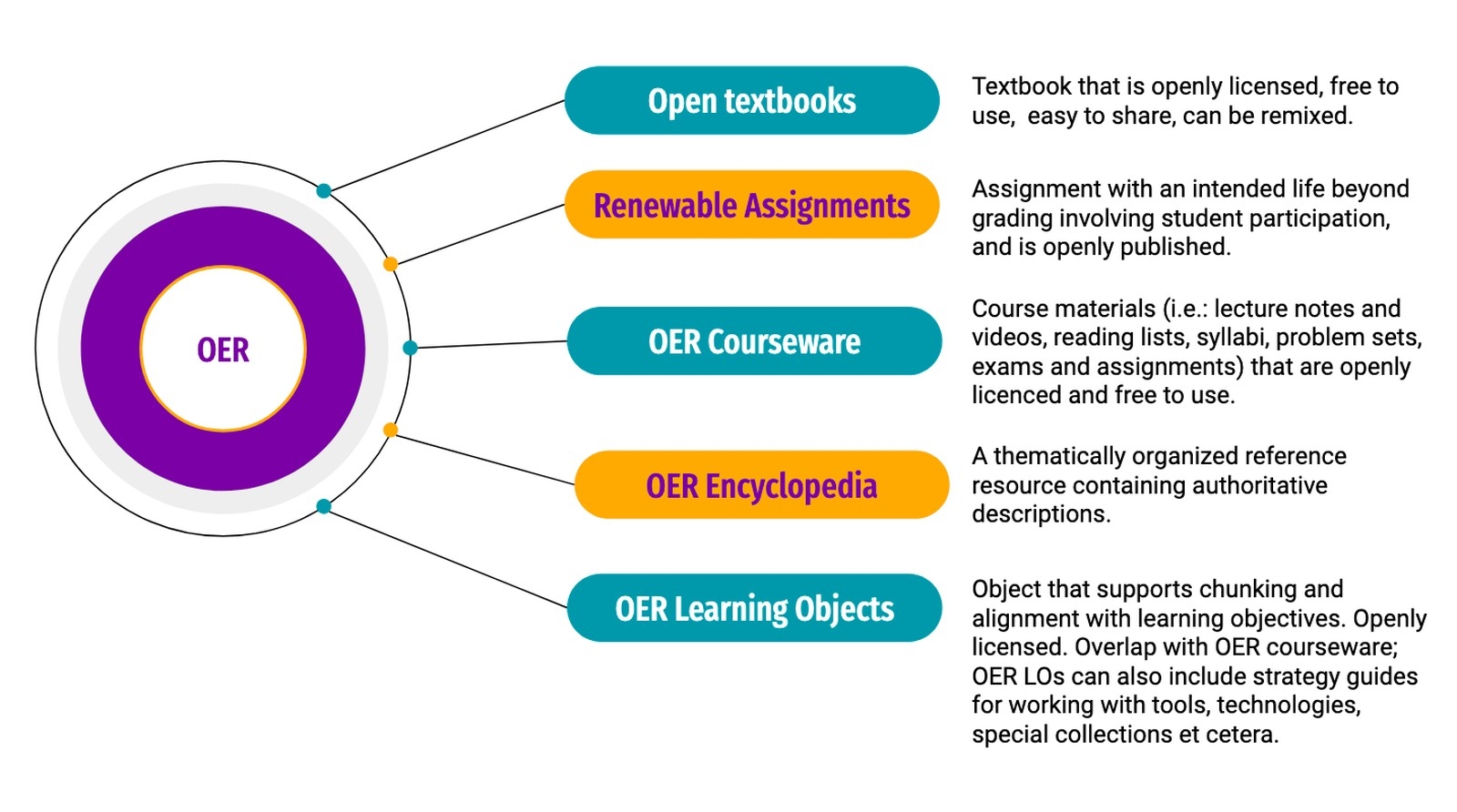OER, So What?
Here are some reasons why Open Educational Resources (OER) matter and what they are.
| Making course material affordable |
• Students might not buy traditional textbooks and course materials because of cost, limiting learning and impacting their financial situations (see: Hocevar, 2017; Florida Virtual Campus, 2012; Lederman, 2018). • In the first two years (2012-2014) of the BCcampus Open Textbook Project, four new and eight adapted open textbooks saved students over $350,000. By 2016, the BCcampus Open Textbook Project resulted in over $13 million in student savings. |
|---|---|
| Expanding access to learning | • OER can be retained for access throughout a course, later in a student's degree, and past graduation. • OER are readily adaptable for enhancing the inclusivity of diverse learners. • With Internet access, OER can be accessed worldwide by learners regardless of age and location. |
| Augmenting content to suit pedagogical needs | • Instructors can customize and remix existing OER to fit their course content, syllabus, learning objectives, assignments. • Instructors can adapt a resource to fit their course contexts, such as by translation and local examples. |
| Enhancing quality (iteratively) | • OER can be directly edited, unlike commercially produced textbooks. Instructors can use their piloted experience with an OER and gather feedback from their students to improve the resource from year to year as needed. • Subject experts can offer peer review to existing OER. |
| Culture of sharing |
• OER pivots around a culture of knowledge sharing and free access. They enable educators to build off each other's works, which includes receiving and providing approripate attribution |
| Respect for author rights | • Authors choose the OER-appropriate licence for their work, which facilitates the retention of author rights. |
Open Educational Resources (OER) are teaching and learning materials in any medium – digital or otherwise – that reside in the public domain or have been released under an open licence that permits no-cost access, use, adaptation and redistribution by others with no or limited restrictions. These open and reusable resources may include textbooks, curricula, syllabi, lecture notes, question banks, audio-video material, assignments, rubrics, etc. With their essential characteristic of openness, open educational resources have a role to play in the democratization of education through universal access to information. UNESCO's mandate in OER declares that "universal access to information through high quality education contributes to peace, sustainable social and economic development, and intercultural dialogue."
Definition adapted from "Open Educational Resources" (UNESCO) AND "Open Education: Content" (EDUCAUSE).
The 5Rs of OER openess
| Retain | the right to make, own, and control copies of the content (e.g., download, duplicate, store, and manage) |
|---|---|
| Reuse | the right to use the content in a wide range of ways (e.g., in a class, study group, website, or video) |
| Revise | the right to adapt, adjust, modify, or alter the content itself (e.g., translate the content into another language) |
| Remix | the right to combine the original or revised content with other material to create something new (e.g., incorporate the content into a mashup) |
| Redistribute | the right to share copies of the original content, your revisions, or your remixes with others (e.g., give a copy of the content to a friend) |
| The frequently referred to 5Rs framework comes from David Wiley. This table is adapted from Wiley's blog page published freely under a Creative Commons Attribution 4.0 license at http://opencontent.org/definition/. | |
54-min Presentation on What and Why OER Matter
David Wiley, "High Impact Practices for Integrating Open Educational Resources (OER) into University Courses," 54 min video with closed captions, CC BY
Types of OER
Open textbooks are a quintessential type of OER. There are other forms worth considering as well.



